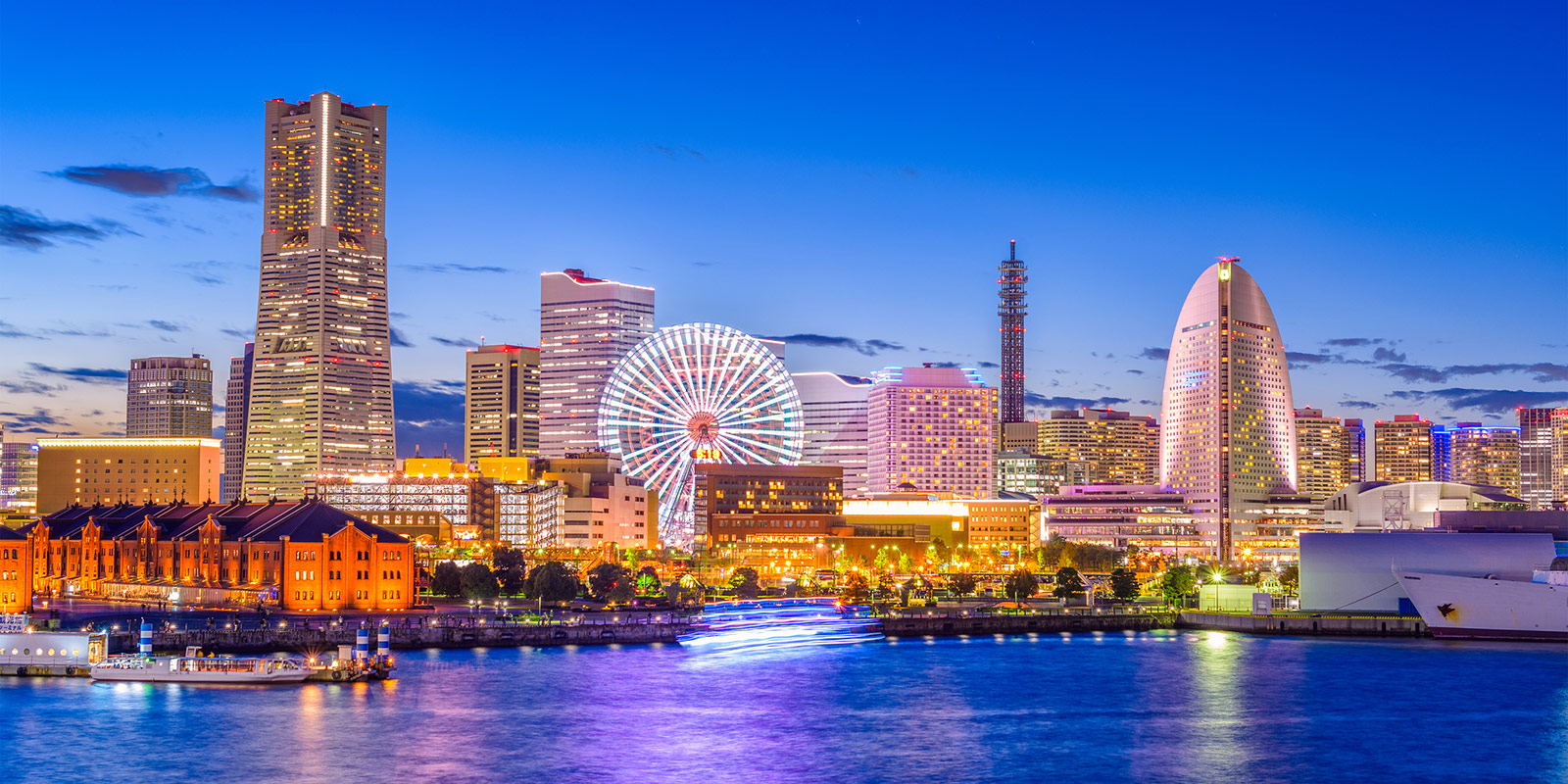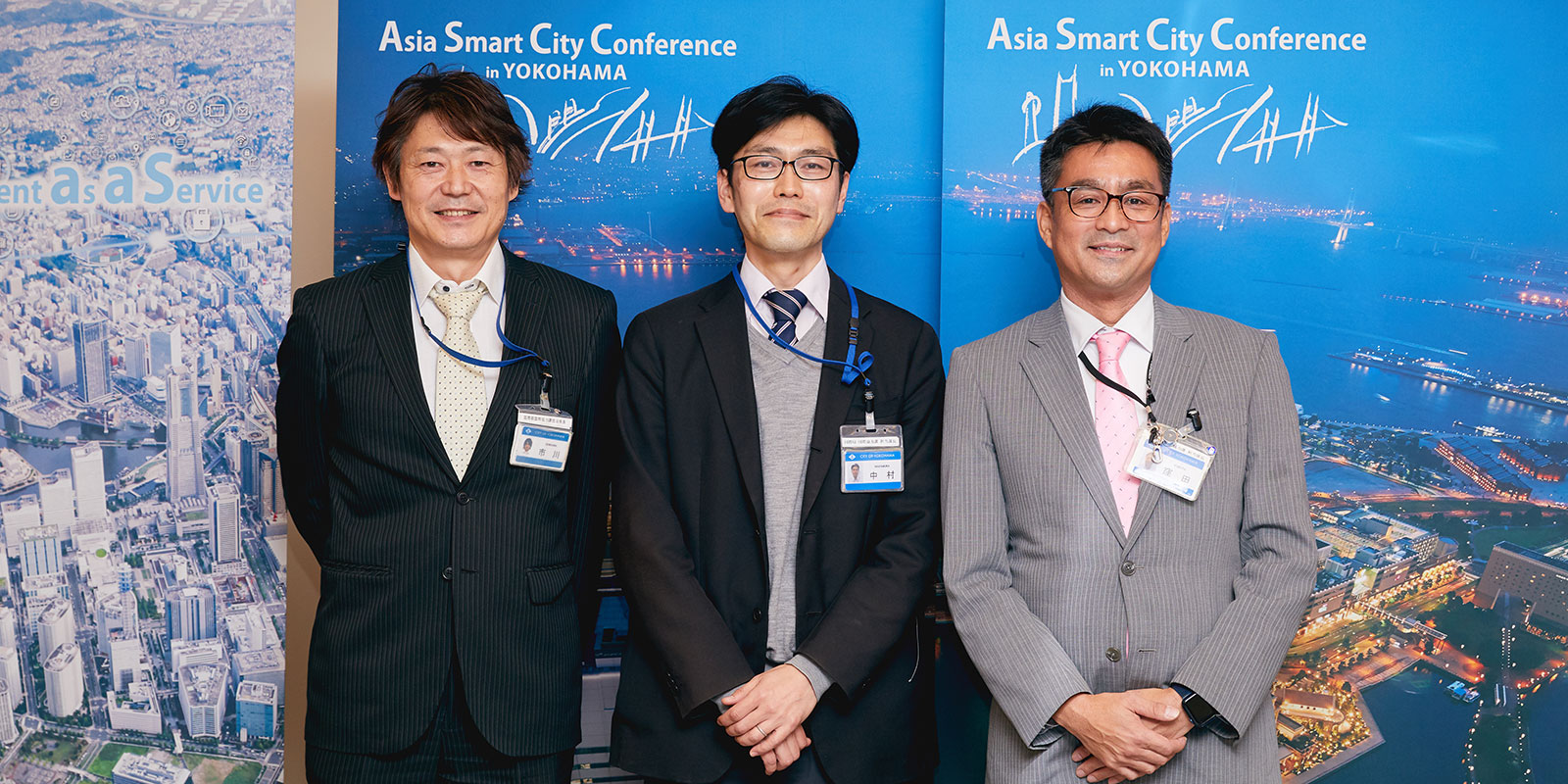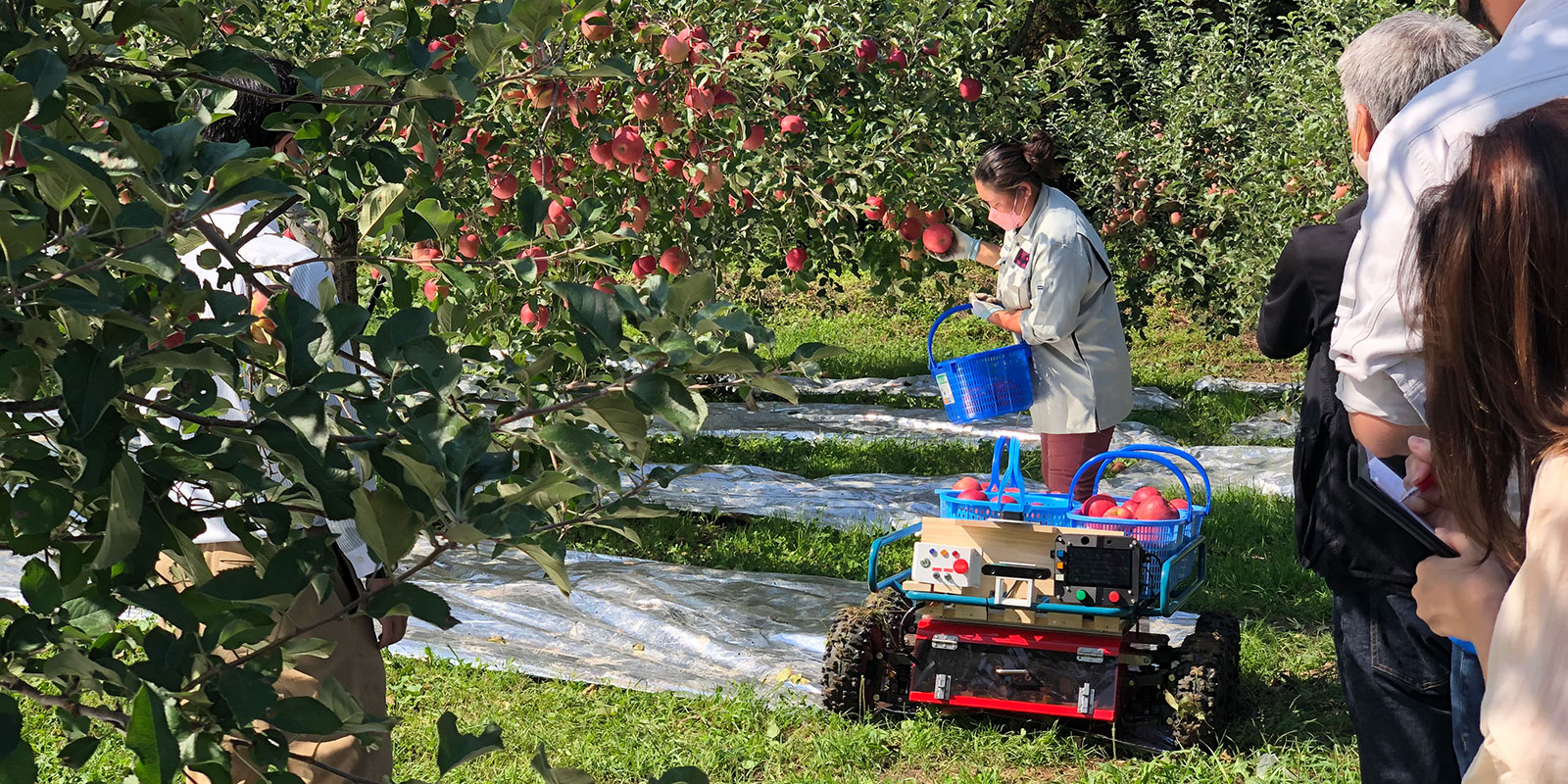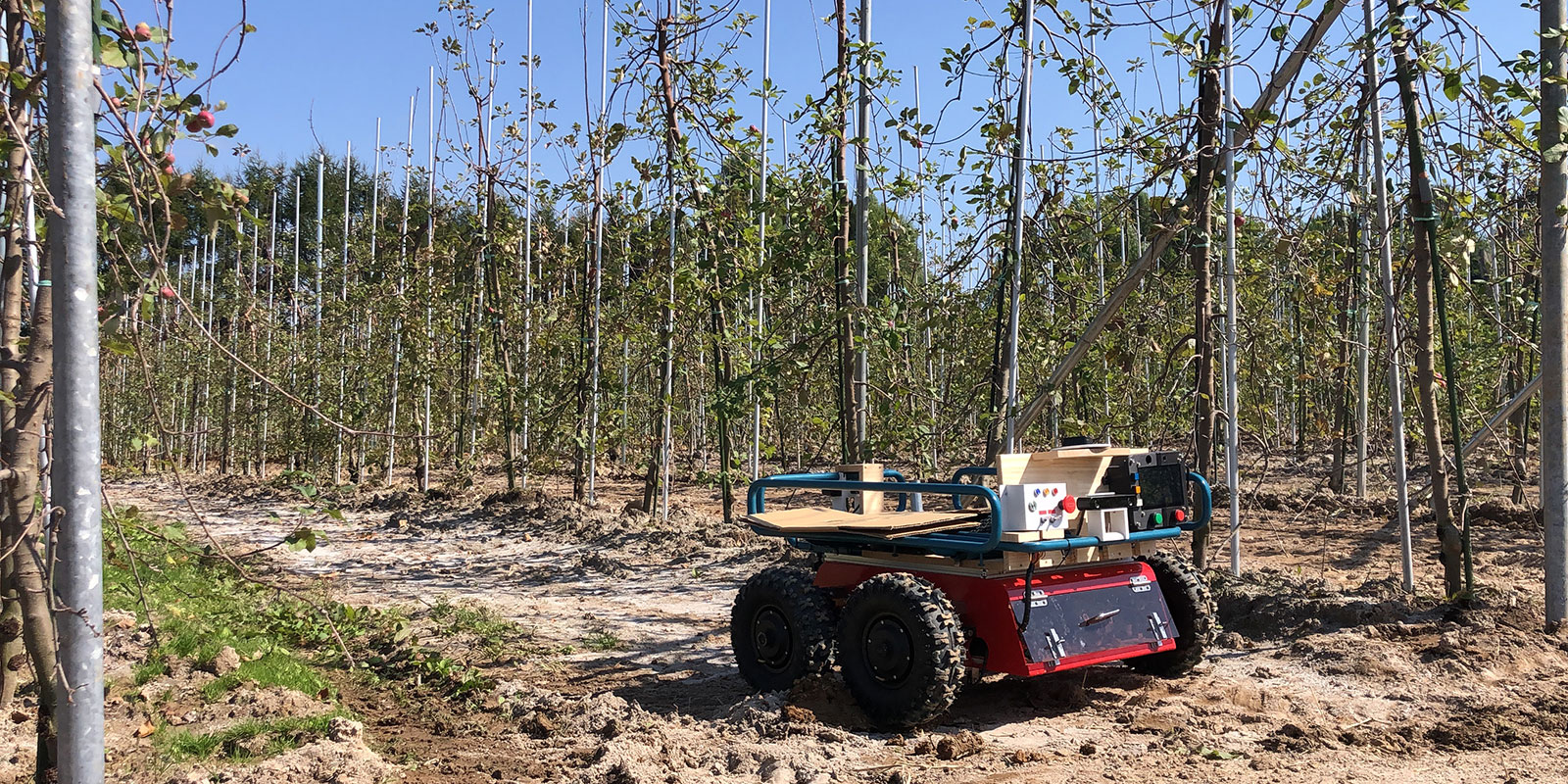Towards a Digital Garden City Nation: Part two
The second part in our look at the role digitization will play in Japan’s greener tomorrow
The government of Japan’s vision for a Digital Garden City Nation is a bold plan to use technology to create a greener country and Unlock is profiling some of the projects at the forefront of this movement. In part one we explain more about the vision for a Digital Garden City Nation and look at the world’s most extensive set of virtual city models. While below we look at the role technology exports and smart agriculture will play.
Growth strategies
 The city of Yokohama | Sean Pavone/Dreamstime
The city of Yokohama | Sean Pavone/Dreamstime
Having undergone its own incredible growth spurt, Yokohama is now helping the megacities of tomorrow by leveraging local companies’ technology into making fast-growing Asian cities greener and more liveable. We explore the “win-win” thinking underpinning the city’s pioneering Y-PORT project
While countering depopulation and rural decline is one of the main aims of Japan's Vision for a Digital Garden City Nation, many believe that the country's cutting-edge technology will also prove useful for alleviating the issues brought on by rapid population growth—a pressing concern for numerous cities in the emerging economies of Southeast Asia.
This line of thinking is being converted into concrete business opportunities in Yokohama, a city that has seen its own population boom. Once a small fishing village, Yokohama became Japan’s most important port practically overnight after the country’s opening to foreign trade in 1859. Its population swelled further after WWII, rising from some 600,000 in 1945 to over three million in the 1980s. The rapid change brought with it some growing pains, but once racked by pollution, waste, and housing issues, Yokohama is now one of the most desirable places to live in Japan. Drawing on its experience in dealing with these urban troubles, Yokohama is looking to help fast-growing cities in countries such as Vietnam and Thailand avoid the same pitfalls.
At the center of Yokohama’s efforts is the Y-PORT (“Partnership of Resources and Technologies”) initiative, established in 2011 to provide “smart urban solutions” to rapidly urbanizing partner cities such as Da Nang, Bangkok, and Cebu. The project connects these cities with Yokohama-based firms noted for their expertise in areas such as wastewater treatment, solid waste management, transportation, and smart energy management.
“Our partner cities get access to advanced technology that can help solve their issues with pollution and global warming”
 Takeshi Ichikawa, Yasuaki Nakamura, Akihito Kubota | Kisa Toyoshima
Takeshi Ichikawa, Yasuaki Nakamura, Akihito Kubota | Kisa Toyoshima
According to Akihito Kubota, manager for development cooperation in the city of Yokohama’s international affairs bureau, the Y-PORT approach is all about building mutually beneficial relationships. “Yokohama-based companies receive greater business opportunities through increased orders from abroad,” he says, “whereas our partner cities get access to advanced technology that can help solve their issues with pollution and global warming.”
But why pick those specific partners? “Cities like Cebu and Da Nang are going through an experience quite similar to that Yokohama had during Japan’s [postwar] period of rapid economic growth,” says Yasuaki Nakamura, Yokohama’s director for development cooperation. “They have populations of around one million, as we had in the 1950s, but that number is expected to double in the coming decades. Our experience can be helpful in their urban development.”
One difference between the postwar decades and today is the availability of digital solutions to environmental problems, and many of the projects under the Y-PORT umbrella make use of digital technology. In one such venture, Yokohama Water Co. teamed up with Dawaco, the water supply company of Da Nang, to install nine high-efficiency pumps at the city’s Cau Do water treatment plant, significantly cutting the plant’s energy consumption. A web-based monitoring system allows Yokohama Water to observe the pumps’ operation from afar. “We can see whether they’re running or not, how much water is in the plant’s reservoirs, and how much energy is being used, all in real time via the internet,” says Wataru Tamura, who manages data monitoring at the company. “This allows us to contact Dawaco immediately in case a pump goes out of service, and for an accurate calculation of emissions reduction.”
“Cities like Cebu and Da Nang are going through an experience quite similar to that Yokohama had during Japan’s [postwar] period of rapid economic growth”
Another undertaking facilitated by Y-PORT saw environmental technology firm Finetech Co. install solar panels on the roofs of two factories in Bangkok. As a result, the plants—one of which produces fishing nets, the other disposable lighters—are now powered entirely by clean energy. Finetech CEO Motoyuki Okada says that in addition to benefiting the climate, the project’s success has boosted his company’s business prospects in Thailand, and that the backing provided by Y-PORT has been crucial. “[Operating within the Y-PORT framework] reduces risk and offers local market access that can then be expanded beyond the partner city,” he explains.
The fruitfulness of cooperative projects such as these is encouraging Yokohama officials to look toward expanding the scope of Y-PORT. “We are pursuing further opportunities to promote Yokohama’s technology, and are actively establishing connections with [new] cities overseas,” says Nakamura. And such opportunities may well present themselves: with the Vision for a Digital Garden City Nation set to supercharge digital-powered urban and environmental planning in Japan, international demand for the country’s high-tech solutions could soon soar.
Robo crop
 An automated transport robot at work in an apple orchard | Picture courtesy of Kisui Tech
An automated transport robot at work in an apple orchard | Picture courtesy of Kisui Tech
Smart agriculture has the potential to transform rural life, with robots assisting farmers to increase their harvests and help ensure Japan’s food security. Kisui Tech CEO Tamir Blum explains his plans to usher in a new age for agriculture, starting with apples
For a long time, it looked like Tamir Blum’s future lay in the stars, literally. Having completed a Masters degree in the application of artificial intelligence in lunar rovers at UCLA, he won a prestigious internship at Elon Musk’s outer-worldly exploration company SpaceX, which hopes to conduct manned missions to Mars by 2030. “To be able to intern at SpaceX was a very big dream of mine,” says the 29-year-old American-Israeli. “But I started to question what I was doing. I couldn’t see the benefits of pushing to try to colonize Mars when we have so many things to solve on this planet. Technology should make life better for everyone and I saw so many applications for this technology on Earth that would have more impact.”
Space’s loss is proving to be rural Japan’s gain. As part of his studies, Blum completed his PhD at Tohoku University mentored by renowned professor Kazuya Yoshida in the Department of Aerospace Engineering. Blum soon fell in love with the beauty of the Japanese countryside, as well as the challenges faced by rural communities. “I have always loved nature, but back in the US I’d never really thought about agriculture,” he says. “As part of my course I had the opportunity to do a homestay in Miyagi prefecture and visited a small farm. I saw the physical nature of their work and I thought that this is a place where I can help to really make a difference. There are huge inequalities between rural areas and big cities and technology can help address those.”
 Kisui Tech CEO Tamir Blum | Picture courtesy of Kisui Tech
Kisui Tech CEO Tamir Blum | Picture courtesy of Kisui Tech
“I couldn’t see the benefits of pushing to try to colonize Mars when we have so many things to solve on this planet”
In 2021 Blum launched Kisui Tech with the dream of creating agricultural robots which would bring space-age technology to Japan’s farms and orchards. “Japan is an island country and having a self-sufficient food supply is very important, as we saw with the logistical supply chain problems caused by Covid and events like Russia’s aggression against Ukraine,” he says. “Our automated transport robots can help improve harvest efficiency by 33 percent and in the long term perhaps even more.” This, Blum believes, will be achieved by helping Japan’s farmers deal with the physical nature of their work. “The average age of a farmer in Japan is 68 years old,” says Blum. “Robotics can not only help these farmers work longer, but also attract a new generation of people to the rural way of life. By automating some of the more tedious tasks, robots can empower the work that the farmers are already doing.”
Kisui Tech’s first area of focus has been the harvesting of apples. By speaking with farmers, Blum discovered that each basket of harvested apples weighs 20 kg and as many as 250 baskets a day would need to be ferried from the trees to a pickup location. Having a lunar rover-type vehicle taking the strain, he believed, would help the farmers concentrate on farming. So Blum and his team got to work, using his experience to create a wheeled robot that deploys the same SLAM (simultaneous localization and mapping) technology used by lunar exploration vehicles to traverse the rugged terrain of orchards. “In many ways the surface of the moon is similar to a farm,” says Blum. “There are lots of rocks, it’s bumpy and there are obstacles that the rover has to be aware of. The good thing about the farms is that unlike the moon if the rover breaks you can just go and pick it up. The bad thing is the mud!”
“The good thing about the farms is that unlike the moon if the rover breaks you can just go and pick it up. The bad thing is the mud!”
 Blum hopes his autonomous vehicles will be commercially available by 2024 | Picture courtesy of Kisui Tech
Blum hopes his autonomous vehicles will be commercially available by 2024 | Picture courtesy of Kisui Tech
The team are currently working on their fifth prototype, all developed by working closely with farmers across Japan, and the company plans to have its autonomous vehicles commercially available by 2024. So far, the reception has been incredibly positive. “We are creating our own sort of community: us, the farmers, local government and other businesses,” he says. “The farmers we have worked with have been so enthusiastic, and so helpful—sharing the things that work and those that don’t. Their work is so important for everyone’s way of life and if we can help them, then we can revitalize the whole countryside.”